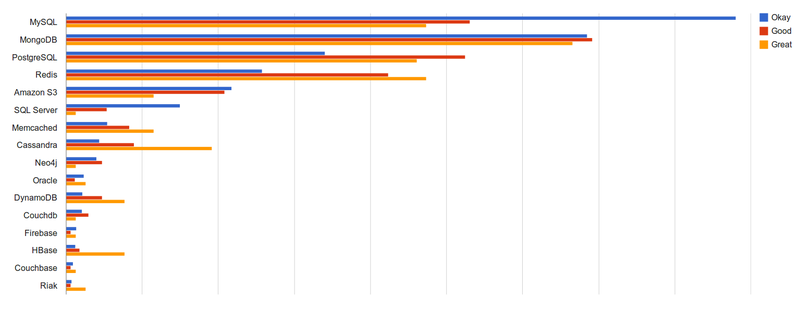
NoSQL, the newish alternative to traditional relational databases, is a big deal, but it can also be a big mess: there are more than 100 different NoSQL databases, and several different kinds ranging from document to key-value to columnar to graph databases. Even more confusingly, relational databases are now cross-dressing as NoSQL databases, adding support for JSON, among other things.
And yet enterprises are navigating the potential pitfalls and embracing NoSQL in droves. Today Redis Labs, a company that offers a cloud service for the popular in-memory, key-value NoSQL database Redis, announced that it has hit 3,000 paying customers.
See also: When NoSQL Databases Are Good For You And Your Company
This number would be impressive for any company, but it’s particularly noteworthy for a company that has to compete with rivals who are also selling Redis, including Pivotal, which employs Redis’ sole developer, Salvatore Sanfilippo.
The Redis Phenomenon
Most people tend to think of Redis as a close cousin to Memcached, an open-source memory-caching system often used to speed up data-intensive websites by limiting the number of database calls. That’s true up to a point, although it doesn’t do Redis justice.
Redis also offers “built-in persistence (snapshotting or journaling to disk) and more datatypes,” which, among other things, means “you can use Redis as a real database instead of just a volatile cache,” as Carl Zulauf described on Stack Overflow.
I interviewed Redis Labs co-founder and CEO Ofer Bengal this week, and he stressed that while Redis Labs is still early in its market adoption, “we are starting to also see enterprises adopt us.” That’s in addition to the early adopter Web companies and startups that have been its staple to date.
Based on Leo Polovets’ analysis of AngelList data, Redis is one of the hottest database technologies around:

It is not, however, always easy to use—or, rather, to overcome the operational limitations Redis presents to those trying to run it in the cloud. Redis Labs built a proxy-based architecture that overcomes Redis limitations and makes it easier for companies to have a good experience running Redis at scale.
Redis Finds Its Customer Niche
While Redis is still a rounding error compared to MySQL or even PostgreSQL, its relative growth is off-the-charts, measured in terms of jobs:

Regardless, Redis isn’t growing at the expense of relational database systems, Bengal told me. Instead, it’s enabling a whole new class of high-performance applications:
Redis is a bit different from other NoSQL systems in that it is served from RAM. RAM is much more expensive than disk, so Redis isn’t used as a replacement for other databases but people instead use it for net new use cases, architected for Redis. We have users that base their entire application on Redis.
Early on, Bengal said, the company saw Redis used side-by-side with Cassandra and other databases. “But now we’re seeing entire applications built on Redis,” he said. “Not the majority, but it’s a nice trend.”
So far, that trend is mostly playing out in a few particularly industries. Bengal said Redis Labs’ 3,000 customers are largely concentrated in gaming, online advertising and financial services. The common thread connecting them? Speed. As he noted, “Most use cases have to do with high performance, given that Redis is the fastest database today.”
Learning Redis
Unlike most open source companies, Redis Labs doesn’t provide consulting services. Frankly, it hasn’t needed to, given the active Redis community.
Nor has it needed to roll out training, though Bengal told me that the company expects to do this soon. As he says:
Redis has very attractive data types and commands that are very useful in almost any application. So developers really love Redis. It’s not very complex so people are doing OK with it without formal training.
Fortunately for Bengal, however, 3,000 companies feel the need to make Redis even easier by running Redis Labs’ cloud services.
Lead image courtesy of Shutterstock

















